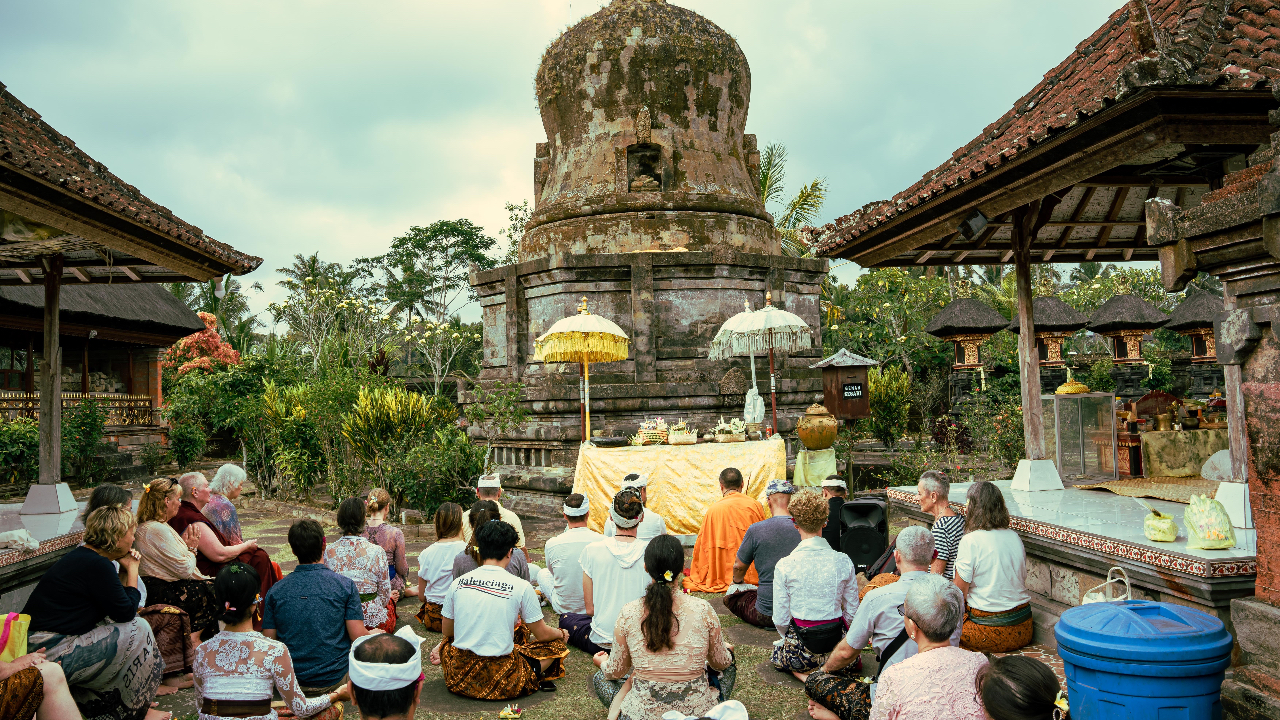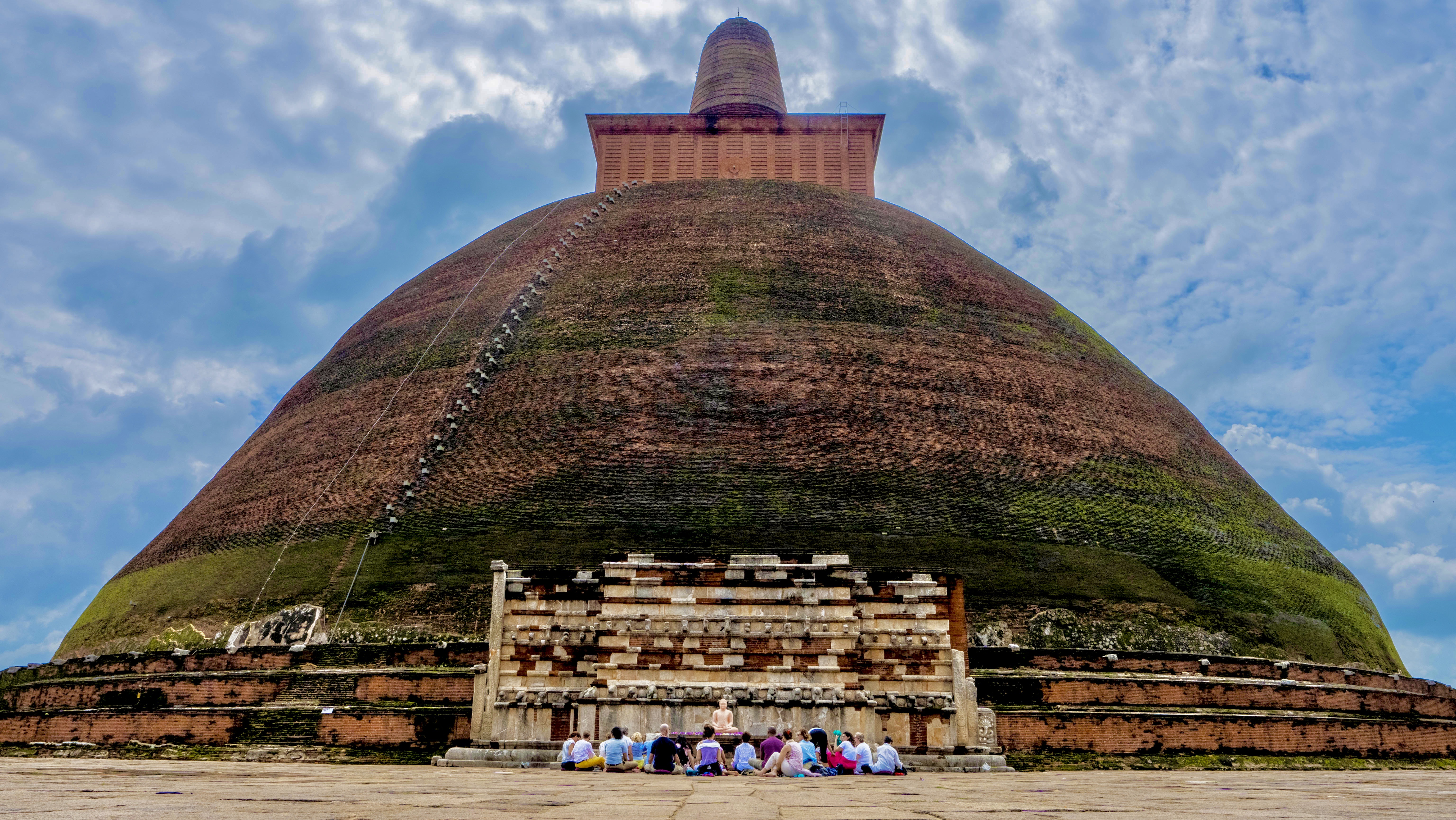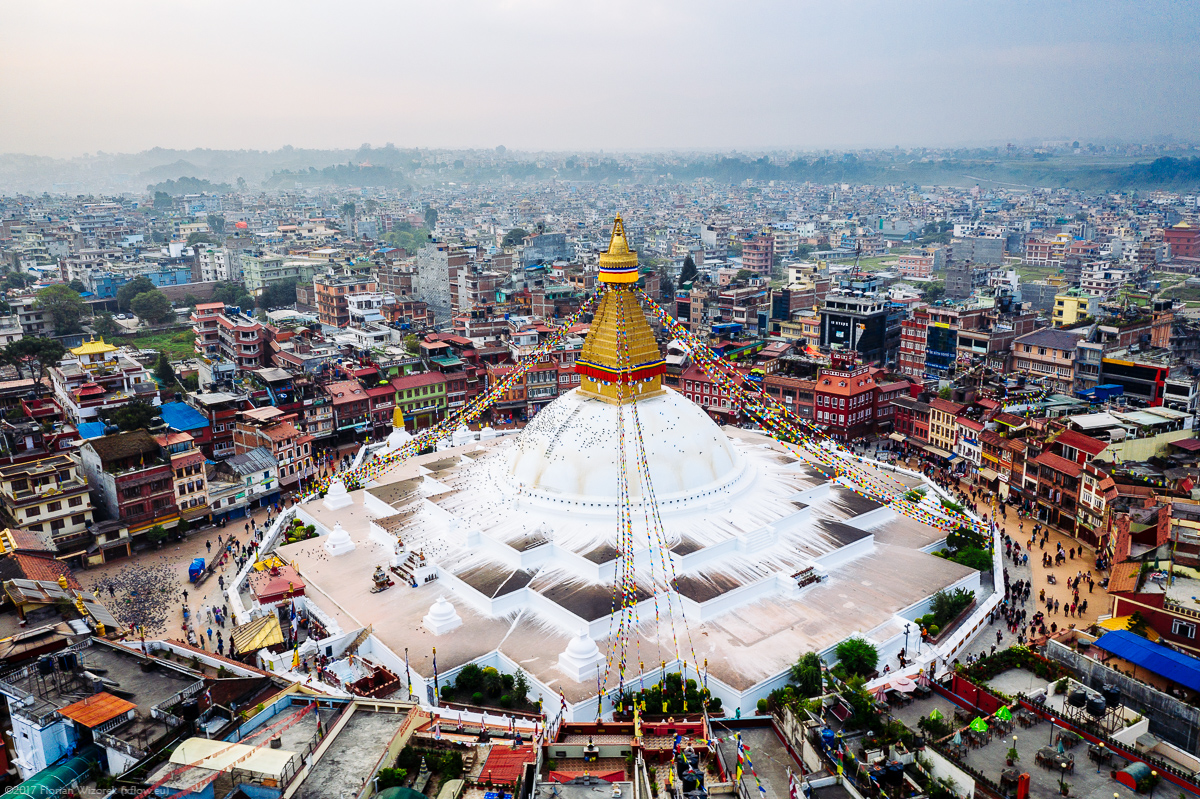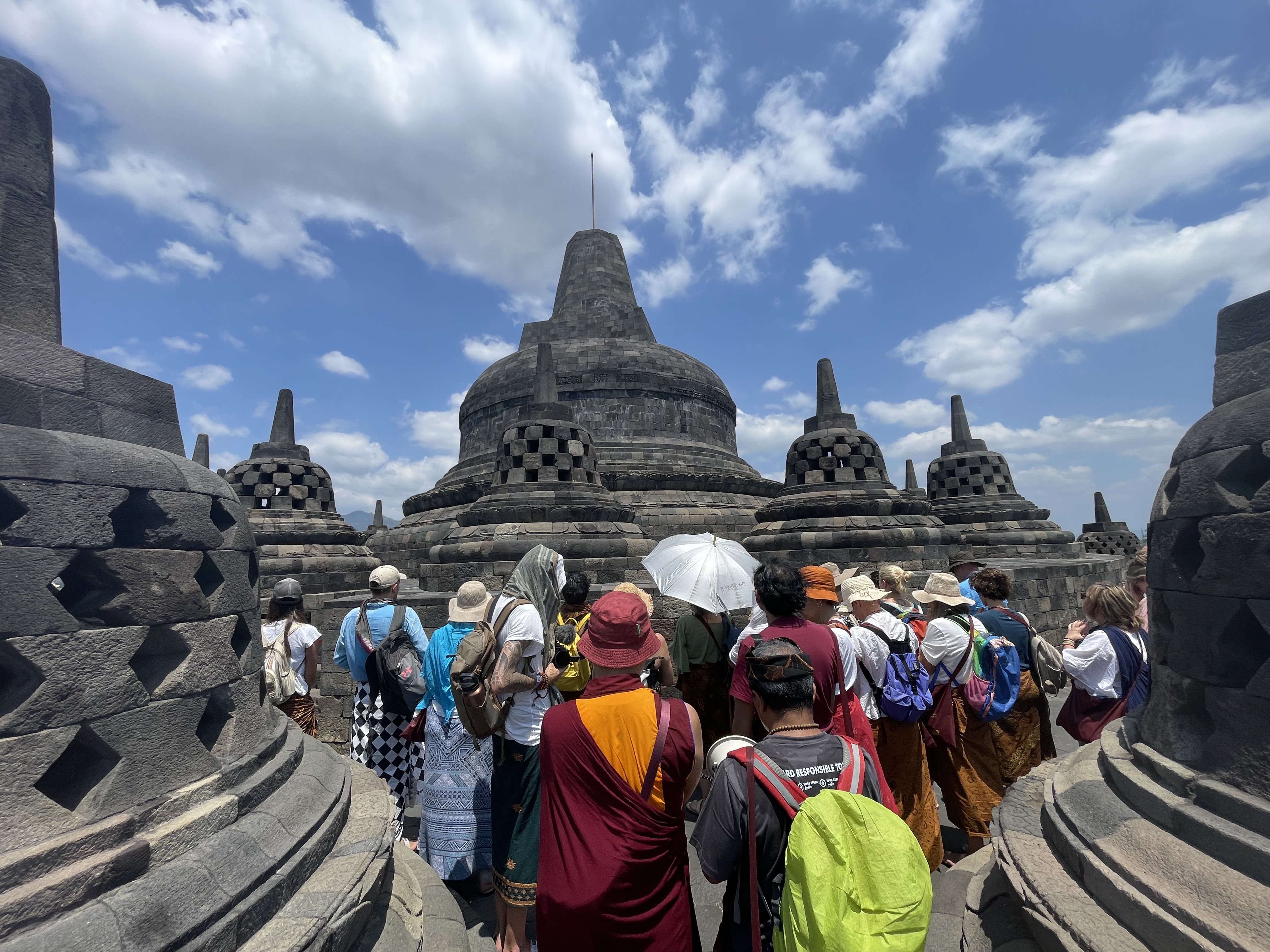
Broken Beyond Repair or Already Free?
Nov 02, 2023Humanity is on the brink of a third world war, and the Arab-Israeli conflict is but one of many complex global challenges we all face. Given the horrific devastation and loss of life, I ask myself the obvious question: are we broken beyond repair?
It’s an existential question that emerged on our recent pilgrimage to the mystical islands of Indonesia led by Geshe Tenzin Zopa and one that Buddhism offers a nuanced answer to. In last month’s newsletter The Stupa Symbol of Unity, I wrote about the broken chatra, or spire, on top of the Borobudur mandala in Java. I want to continue exploring this theme and the many teachings it contains for us. It’s the subject of my upcoming talk “Hope in the Dark Night: Life Lessons from Spiritual Pilgrimage” hosted by The Bridge at Green School, Bali, and available for all on livestream here.
First, what is a stupa and what does it symbolize? A stupa is not a Buddhist temple, one does not usually enter a stupa for prayer or meditation, one circumambulates it. These bell-shaped structures are reliquaries, they contain within them holy relics of the Buddha or awakened masters, precious texts of his teachings, and other sacred objects imbued with power. I think of them as time capsules or storehouses of wisdom, made to withstand the test of time, and inspire future generations. Symbolically, the stupa represents the Buddha’s enlightened mind, the luminous, omniscient, all-pervasive dharmakaya.

What exactly is the Buddha’s supreme realization? It is a mind that intuitively realizes beyond concepts the fundamentally open nature of reality, called emptiness. Far from a nothingness, emptiness is not a dark void or an abyss. It is the absence of the inherent reality of phenomena - people, places, and experiences - that allows things to change and grow. Emptiness is a metaphoric womb of possibility that births the arisings of all phenomena including samsara, suffering, and nirvana, peace. Emptiness therefore implies transmutability, things can be transformed, like water into ice or vapor, or human adversity into advantage, precisely because nothing, absolutely nothing, has a fixed, independent existence, from its own side. Just seeing a stupa reminds us of the mind's ability to directly perceive the radical openness of reality and thus becomes a potent symbol for us to contemplate when things feel intractably dire and desperate.

As a symbol of emptiness, the stupa inspires hope. Like a lighthouse in the darkness, or a telecommunications tower emitting a positive vibration amidst the noise, the large stupa structures that dot the Buddhist world stand tall conveying what is true about our human potential, even amidst our hallucinations and reactivity, we are also capable of incredible clarity and compassion. Samsara is nirvana, and nirvana is samsara, they exist simultaneously not as places but as states of mind. This is why Geshe Tenzin Zopa and Mangku Jito wanted us to “repair” the broken chatra atop the Borobudur with our group’s meditative intentions and energy. What they understood was that we first need to see a positive outcome in our mind’s eye, a vision of completeness, for us to then strive towards repairing the structure in the physical world. It’s a great metaphor. We need to remember it’s always possible to heal, make whole, and repair what feels damaged within us and around us in the world. If we suffer depression, hardship, or loss of hope, emptiness understood correctly is considered the ultimate medicine. We should spend far more time envisioning peace, than succumbing to fear, contributing to polarization, and descending into violence. If we want to help anyone, anywhere, we always need to start at home, purifying our perception and opening our hearts.

Back to our existential question. Are we broken? Yes, in a way we are. The stones of the chatra are shattered and missing. Hatred is rampant as people resort to unimaginable destruction. Samsara exists. That’s why we follow a spiritual path that combines training in both wisdom and compassion, leading us and others from misery to liberation. But seen from another perspective, no, we are not broken, the chatra is already complete (from the vantage point of enlightenment), and its nature is unbreakable like the human spirit. Nirvana exists as well. According to the principle of correspondences, "as above, so below, as within so without", the world we perceive outside of ourselves, is a macro reflection of what we have cultivated within us. If we are fragmented and assailed by afflictions, the world looks very different from the world perceived by someone with a greater degree of realization. If the metaphoric chatra within us is recognized as whole, then we can step into reality from a place of peace and compassion.
Similarly, the seed of enlightenment known as the Buddha nature within us can never be created, nor destroyed, given, or taken away. It belongs not to a privileged few, no special in-group of religious believers can claim it as their own, it is the fundamental ground of every living being, every sentient creature. Because the Buddha or awakened nature is our original condition, nothing ultimately must be repaired or added. We are not original sinners in need of repentance, we are only lost in our nightmare-making and need to be roused from slumber. The awakened state is a secret, hidden in plain sight, waiting for us to realize. We may feel broken, but in truth what we are is open. As a result, things can get worse, we can regress into deeper states of torment, or things can improve, and we can evolve into a perfect Buddha. Likewise, we can facilitate the devolution of others, stoking the flames of division, or we can be the condition for others to disarm and discover the latent elixir within them.
Even while the Buddha and many of his heirs through the centuries gained direct insight into emptiness, and thus were liberated from self-imposed suffering, the wars raged on, nevertheless. This is because each being must realize for herself their own nature, it cannot be imparted through blessing or transmitted to another. It’s not enough to believe in awakening, it must be cultivated and experienced directly by each in their own time, through their own efforts. We can help others most effectively by embodying virtue and uprooting our own delusion. That is perhaps the hardest pill to swallow, while humanity standing on the brink of war can and must change, it can only do so through voluntary efforts of everyone seeing through their own distorted projections and misguided reactions. Buddhism has never imposed its worldview on anyone, it has no history of religious conquest, hegemonic jihad, or missionary agenda. In contrast, it offers an open invitation for one to experiment and find out for oneself, like a science experiment, how the mind and reality work. And so we pray that others will examine for themselves, keeping our own minds in as pure a stream as possible.

At the end of the pilgrimage, I asked Geshe-la, “Are we broken”? He said “Yes, of course, we are all in samsara, all broken. We are all smashed into pieces. That’s why we come on pilgrimage, to gather up the pieces!” Then he said, with a huge smile on his face, laughing, and radiating joy, “But also nothing is broken, in its ultimate nature everything is perfect.” It’s hard for me to believe that sometimes from where I sit looking out at our world on the precipice of collapse, but therein lies the whole teaching on emptiness. My pessimistic view leading to paralysis only reflects one contaminated version of reality and contributes very little to the collective field we share. Geshe-la, on the other hand, sees a much vaster horizon of possibilities, and deeper dimensions of reality, widening his circle of care and contributing so much more to the greater good. Because everything is empty of inherent existence, what we do matters, how we see and engage others and the world shapes reality like constructing a mandala made of sand.
In Geshe-la or the Dalai Lama you find people living in the world, responding to the suffering of others, but coming from a more enlightened point of view, undeterred by the malevolence, ever buoyant and patient, driven by compassion. Unfortunately, even the Dalai Lama can't stop the bombs from dropping in yet another war, nor could he spare his people from genocide and exile at the hands of China. His commitment to radical nonviolence and universal compassion takes the higher, much longer, road to inspiring the best for human evolution. It will take all of us envisioning the chatra as complete, all of us realizing we are already whole and free, for peace to pervade. One mind at a time, one step further along the pilgrimage of awakening at a time, this becomes our commitment, and what makes life purposeful and meaningful.
Hopefully, now it’s clear why Geshe-la wanted us to visualize a complete chatra for world peace atop the Borobudur, why he reactivated the Pegulingan stupa in Bali during a ceremony on pilgrimage reconsecrating it for future us, and why he plans to build another stupa at Rahen Nunnery in the Himalayas that will last another thousand years. Like radio towers in the darkness, emitting high-frequency waves of hope throughout the centuries, reminding us of who we really are, and calling us home.
Stay connected with news and updates!
Join our mailing list to receive the latest news and updates from our team.
Don't worry, your information will not be shared.
We hate SPAM. We will never sell your information, for any reason.





